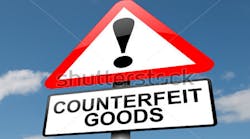Counterfeit food and non-food CPG products represent a nearly $1 trillion problem for manufacturers, their retail customers and consumers, according to the Grocery Manufacturers Association (GMA). This problem builds a supply chain of distrust that starts and ends with the consumer.
“When inauthentic products wind up in the hands of consumers, they lose confidence in the stores and brands they trust,” says Jim Flannery, executive vice president, operations and industry collaboration for GMA.
To help prevent the spread of counterfeit products, the Trading Partner Alliance of the Food Marketing Institute (FMI) and GMA published its 2013 best practices guideline, “Brand Protection and Supply Chain Integrity: Methods for Counterfeit Detection, Prevention and Deterrence.” This guide is the result of research and analysis completed by Inmar, Authentix and a working committee comprised of industry leaders from manufacturers and retailers, and is based on an extensive survey of global CPG manufacturers and national retailers.
The best practices provide guidance for manufacturers and retailers on how to minimize the financial and reputational damage associated with counterfeiting of genuine branded products. Based on the experiences of the leaders surveyed, this effort starts with building a team of people with the right disciplines reporting to the business side of the company. These disciplines fall under four categories: law enforcement, supply chain, packaging technology and legal.
• Law enforcement includes a grounding in Immigration and Customs Enforcement (ICE), Customs and Border Protection (CBP), Homeland Security Investigations (HSI), Department of Justice (DOJ), Federal Bureau of Investigation (FBI) and Department of Homeland Security (DHS), not physical or corporate security. Team members should be trained on how to investigate actual crimes.
• Supply chain associates should understand how products are made and distributed to the end use consumer. To lock down a supply chain, there must be an understanding of where products are made, which wholesalers handle which product and whether the product is contract manufactured, co-packed or distributed by a third party or in-house. In manufacturer organizations, this should be where anti-counterfeit operations report.
• Because packaging is a critical element for brand protection, this group should include people who understand packaging technology specifications, authentication requirements, equipment standards and regulatory issues.
• Legal expertise is needed to investigate incidents, preserve deterrence options and to prosecute offenders or seek civil damages. Additionally, proactive legal work prior to an incident can improve available remedies and sustain brand protection goals.
This report also includes case studies, risk assessment tools for the CPG manufacturing and retail industries and results from a consumer survey about counterfeit goods.




